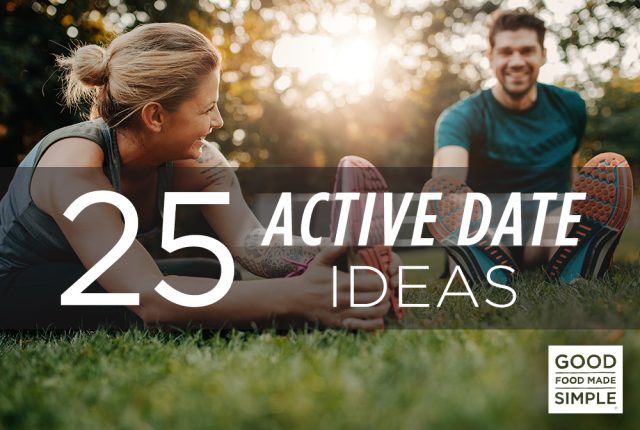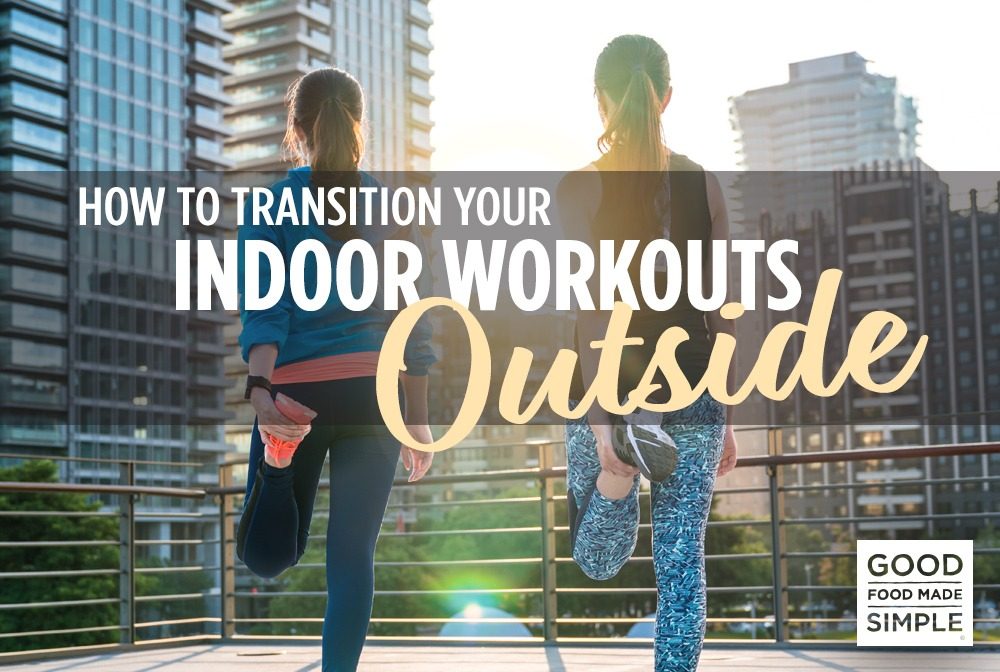
25 Active Date Ideas
While going on dates can certainly be fun, a typical night out with a romantic partner often ends up being focused on eating ...
read more
With spring in full force, many people are saying so long to treadmills, gym floors, and boutique classes in favor of outdoor workouts. While exercising outside might not seem complicated, there are certain key things to be aware of in order to have a productive, safe, and fun workout.
Here are 15 pieces of advice to ensure an easy shift from indoor workouts to exercising outside:
Continue to dress in layers. Even though the temperature is indeed heating up, you’ll want to bring layers with you. Consider bringing an underlayer to wick the sweat away from your skin, along with an outer wind and waterproof shell to protect you from the rain. Outside, the weather and temperature can shift quite quickly, especially in the spring, so it’s better to be safe than sorry!
Check the weather. Speaking of the weather, you no longer have a roof over your head to protect you from the elements. You also don’t have access to air conditioning to keep you cool. Check the weather ahead of time in order to dress and hydrate properly.
Wear sunscreen. Even if it’s not scorching out, or if it’s overcast, the sun is still in the sky and its UV rays are shining down on your exposed skin. It never hurts to wear sunscreen. SPF 50 on your face, shoulders, neck, arms, and legs will do the trick. Look for sports sunscreen that won’t drip away when you sweat, too!
Consider a visor or sunglasses. Another way to protect your face from the sun and to keep the sun out of your eyes is to wear a visor or a pair of sports sunglasses. For anyone with long hair: I find that wearing a hat helps keep my ponytail securely tight and all the hair out of my face too!
Look up sunrise and sunset times. The days are getting longer, which means you have more time to exercise outside while it’s still light out. Still, it’s important to pay attention to when the sun is setting so you don’t get caught in the dark. Check when the sun is rising as well; if you are a super early exerciser, bring reflective gear and let a friend know you’re heading out for a workout.
Carry food and/or water. Exercising outside means you no longer have the luxury of water fountains and vending machines at the gym! Depending on the length of your workout, you can leave water or a snack in the car or carry it with you. I enjoy carrying a handheld water bottle that has a zipper pocket for a small granola bar or a handful of nuts and dried fruit. Instant energy and hydration!
Preplan your route. If you’re going for a run, map out your route instead of winging it. This way you can avoid lots of street lights, a busy road without a sidewalk, or desolate areas. Planning your run ensures you go the exact distance you have planned as well. Use running or bike trails whenever possible for safety and to avoid getting lost.
Change your footwear. After a long winter inside, you might have put more miles and wear on your sneakers than you realize. Runners should change their shoes every 300-500 miles. This includes miles spent walking, too! Start spring off fresh with a new pair unless yours was a recent purchase.
Bring an ID. It never hurts to carry your personal identification card with you just in case. It’s rare, but if you fall and get knocked out, or faint while exercising, having your ID on you will make emergency care go much more smoothly and will help to let a loved one know right away that you are at the nearest clinic or hospital.
Grab a buddy. Working out in the great outdoors is always more fun with a friend. It also helps keep you accountable when it might feel easier to sleep in or got to an outdoor happy hour after work. Pick a friend and set a weekly date when you both go for a run and do bodyweight exercises in a park.
Join a club. If the buddy system works for you, why not get a whole community to workout with? These days there are tons of local run clubs you can join to help get you outside. The best part is you’ll meet new people and they often end up going out for dinner or drinks after. Win-win.
Learn bodyweight exercises. If you want to take what you do at the gym and bring it outside (without carrying a ton of dumbells with you…) bodyweight exercises are the way to go. Think pushups, lunges, burpees, squats, mountain climbers, planks, and scissor kicks. These are just a handful of workouts you can do to strengthen muscles, no equipment needed.
Find a park with exercise equipment. That said, if you want some equipment but want to stay outside, a lot of local parks have exercise machines, pull up bars, and stretching stations for park goers. Check to see if your local park also includes this type of equipment.
Be patient. Even though you might have worked out inside all winter, your body will feel different running or doing strength workouts in a new setting. It might take a few weeks to feel normal, which is totally okay! Trust the process and kudos yourself for getting out and taking care of your health.
With the sun heating up the day, getting outside for a workout is amazing for both the body and mind. Say so long to the indoor gym and make your neighborhood, park, or local trail system your new outdoor exercise haven. With a little bit of planning and patience, your outdoor workouts will have you sweating and feeling great in no time.

25 Active Date Ideas
While going on dates can certainly be fun, a typical night out with a romantic partner often ends up being focused on eating ...
read more
12 Smart Food Swaps For A Healthy Heart
February is American Heart Month, and one of the best ways to maintain good heart health is to watch what you eat. Instead of...
read more
Starting the New Year With the ‘Right’ Mindset
With the holiday finally over and the new year upon us, I’d be shocked if you haven’t thought about New Year's Resoluti...
read more